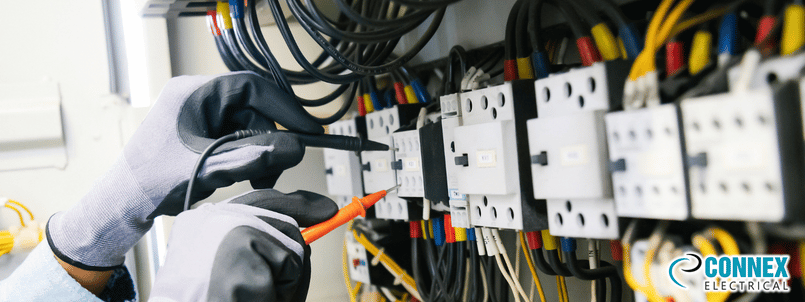Ensuring electrical safety in the workplace is essential for protecting employees, maintaining compliance, and avoiding costly accidents. Regular testing and tagging of all electrical equipment provide a safe, hazard-free environment and keep your business compliant with Australian standards.
In this guide, we’ll cover everything you need to know about establishing a test and tag program.
What is Test and Tag?
Test and Tag involves inspecting and testing electrical appliances to ensure they are safe for use. This process helps to identify potential hazards and reduces the risk of electrical accidents in the workplace. It is a key requirement for maintaining electrical safety and ensuring compliance with Australian regulations, such as AS3760, which outlines standards for in-service safety inspection and testing of electrical equipment.
How Often Should Test and Tag Be Conducted?
The frequency of testing and tagging depends on the type of equipment and the environment in which it is used. Here’s a quick guide to help you determine the right intervals:
- 6-Monthly: Power tools, commercial kitchen equipment, and industrial vacuum cleaners.
- 12-Monthly: Portable appliances like laptops, surge protectors, kettles, toasters, and coffee machines used in staff rooms.
- 5-Yearly: Fixed electrical equipment, such as desktop computers, refrigerators, and other stationary appliances.
Importance of a Test and Tag Program
It is the responsibility of employers to maintain a safe environment for their staff and visitors. A robust test and tag program ensures all equipment is functioning safely, minimizing the risk of electric shock or fire. Partnering with a licensed electrician can help manage your test and tag schedule, keeping records up to date and ensuring that your workplace remains compliant.
What Happens When an Appliance Fails the Test?
If an appliance fails the test:
- It should be tagged as “Out of Service” and removed from use.
- Repair or Disposal: Minor repairs can be done on-site by a licensed electrician. However, if the appliance cannot be repaired, dispose of it safely.
- Document the Failure: Record the defect and action taken for compliance records.
Who Can Conduct Test and Tag?
A competent person is required to perform test and tag procedures. This can be a licensed electrician or an individual who has completed a nationally recognized training course in electrical safety testing, such as the UEERL0003 competency course. These trained professionals can accurately assess the safety of electrical equipment and maintain a detailed Electrical Equipment Register.
Key Benefits of a Test and Tag Program
Implementing a test and tag program offers multiple benefits for your business:
- Accident Prevention: Reduces the chance of electrical shocks or fires.
- Legal Compliance: Satisfies regulatory requirements, such as AS3760 in Australia.
- Insurance Validation: Demonstrates your commitment to safety, which may assist in insurance claims or inspections.
- Operational Efficiency: Ensures equipment is regularly checked and maintained for consistent performance.
Additional Workplace Safety Practices
In addition to testing and tagging, consider these safety practices to further enhance your workplace:
Routine Visual Inspections: Encourage employees to report any visible damage, frayed cords, or other potential hazards.
Employee Training: Train staff to recognize electrical hazards and follow safe practices, such as not using damaged equipment.
Regular Maintenance Checks: Schedule routine inspections for high-use equipment to prevent wear-and-tear hazards from impacting safety.
Conducting Regular Testing: Scheduling test and tag inspections based on recommended intervals for different equipment types.
Hiring Qualified Personnel: Ensuring only licensed or certified individuals perform test and tag procedures.
Maintaining Records: Keeping accurate records of each inspection, including dates, findings, and actions taken.
FAQs
Q1. What is the purpose of testing and tagging in the workplace?
Q2. How often should electrical equipment be tested and tagged?
Q3. Who can perform test and tag procedures?
Q4. What should be done if an appliance fails the test?
At Connex Electrical, we understand the importance of maintaining a safe workplace. Our team of licensed electricians is here to help you set up and manage a comprehensive test and tag program tailored to your needs. Contact us today for a consultation and keep your workplace safe and compliant.

